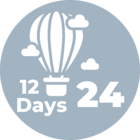I want to place planning site drawings (not geocoded) onto an Ordnance Survey basemap where there are simalar reference ponts which could be used to fix the planning raster. Any ideas would be very useful. I am sure it can be done but I can't work oout where to start. Many thanks.
Reply
Rich Text Editor, editor1
Editor toolbars
Press ALT 0 for help
Enter your E-mail address. We'll send you an e-mail with instructions to reset your password.















